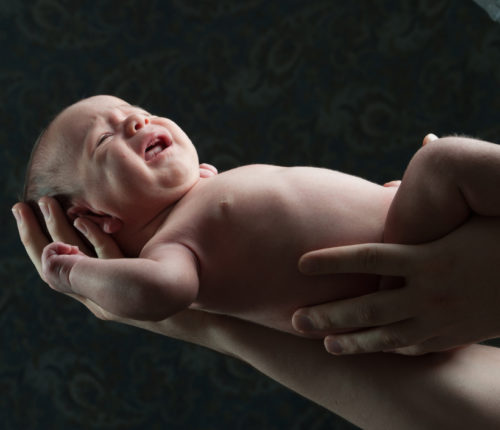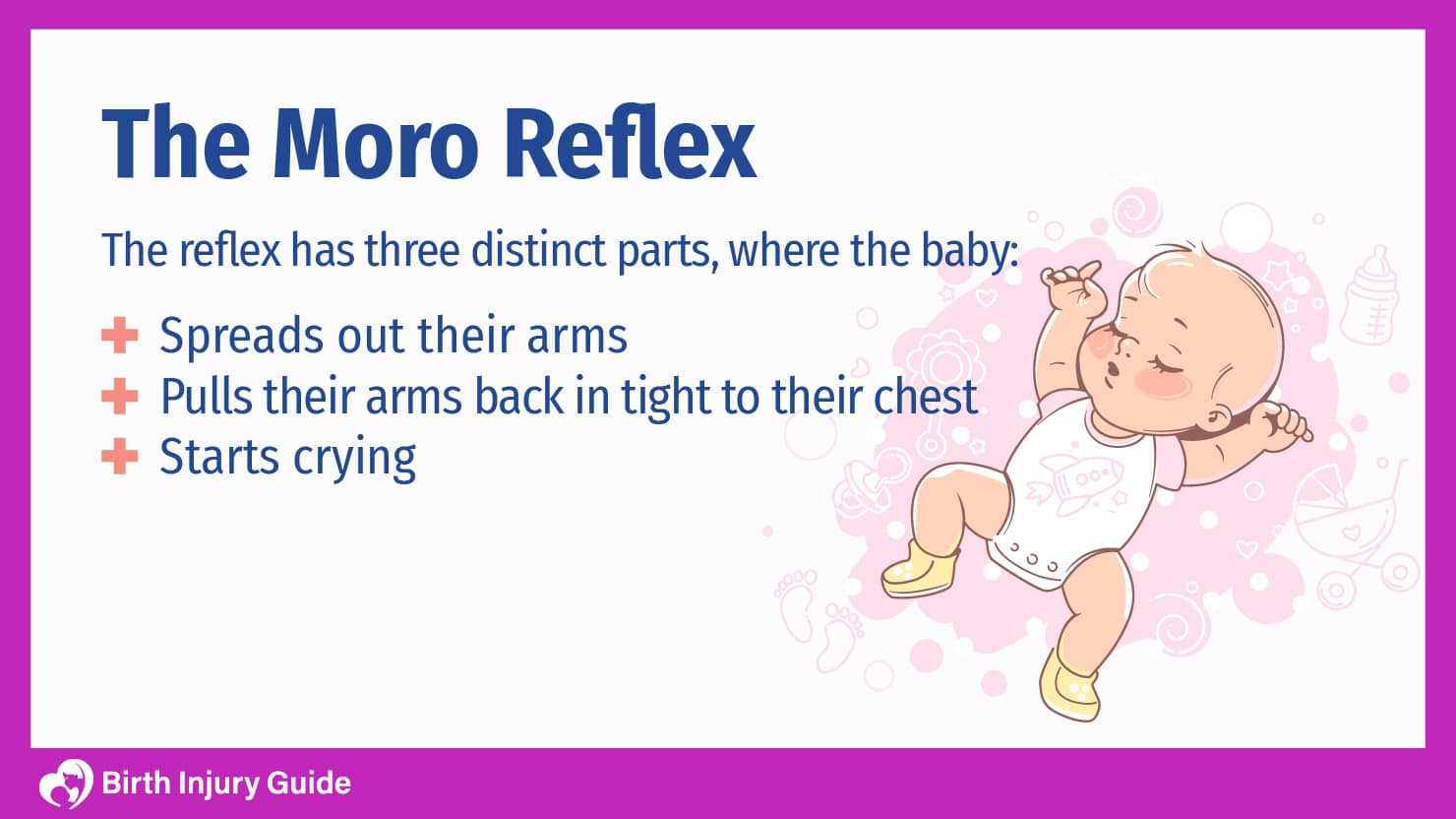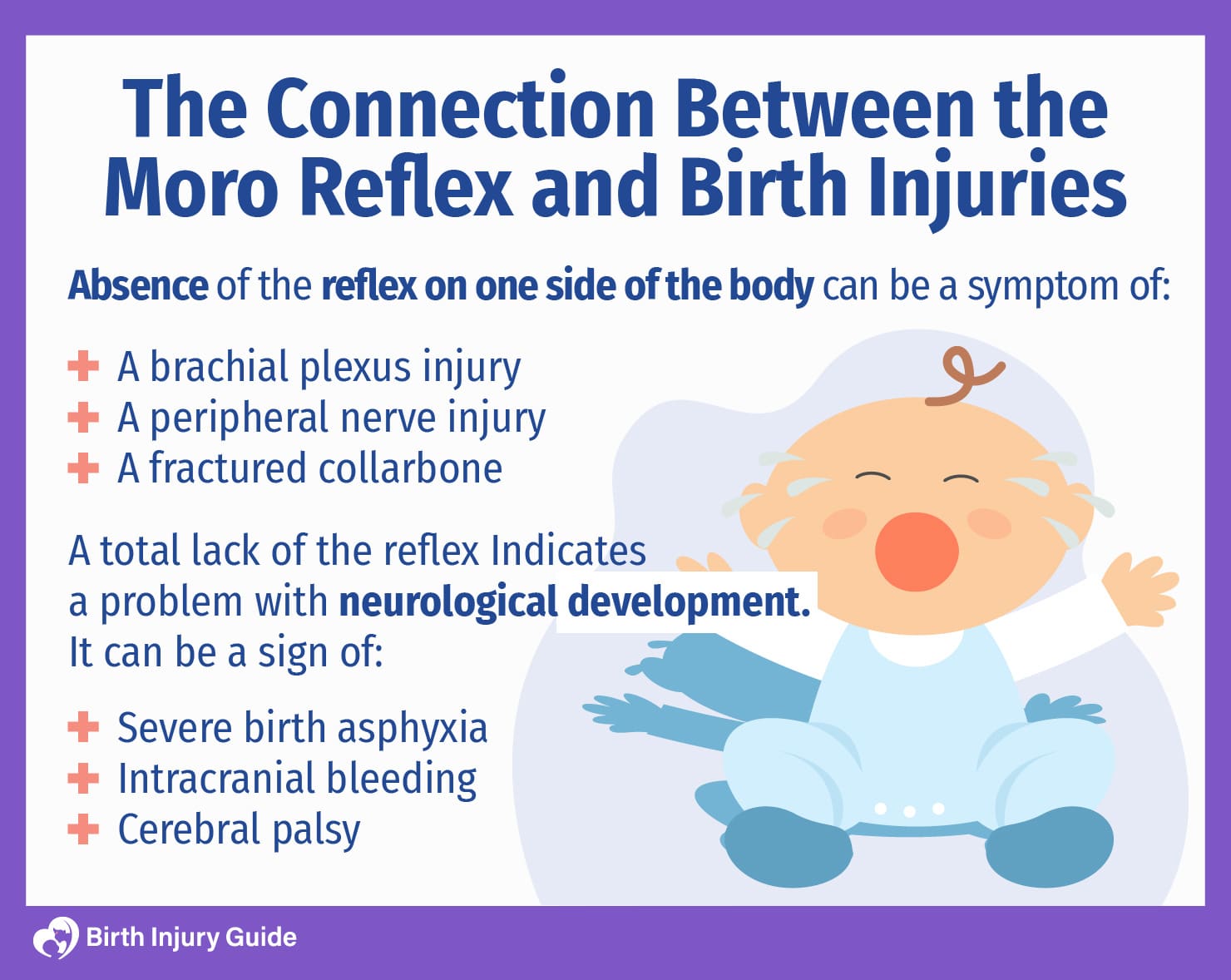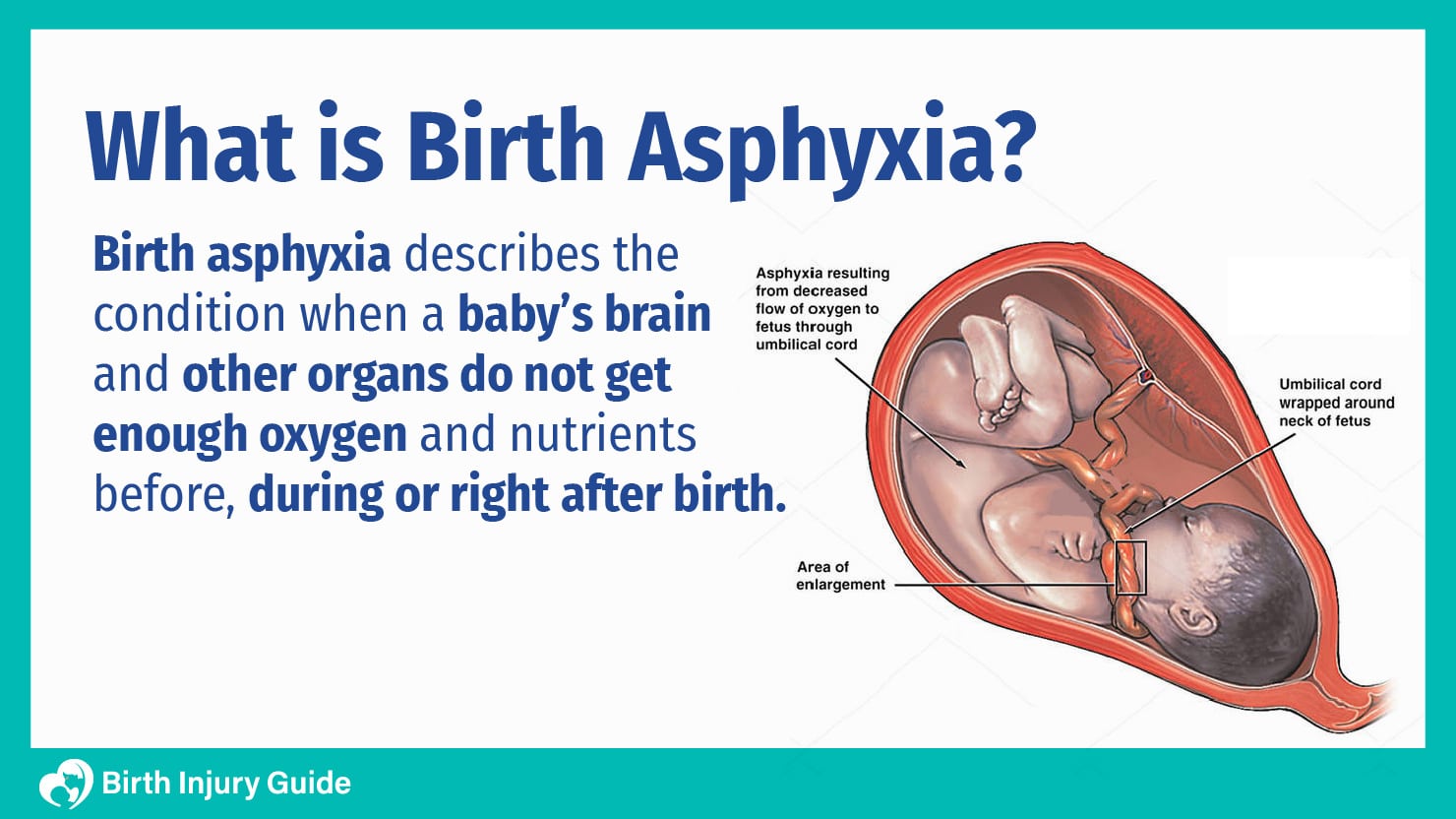
Are Birth Asphyxia and Moro Reflex Related?
Most new parents have experienced the frustration of putting a baby down to sleep. But instead of going to sleep, the child throws their arms wide and starts crying. It may not seem like a good thing to sleep deprived parents, but this reflex is actually a sign of a healthy developing brain. The absence of this reflex, called the Moro Reflex, can be a sign that the child suffered birth asphyxia or hypoxic-ischemic encephalopathy (HIE).
Information about The Moro Reflex
The Moro Reflex is a reflex all healthy babies should have. It occurs from birth up to about five months of age. It peaks in frequency and intensity at around two months. The reflex has three distinct parts, where the baby:

There is no medical or scientific consensus about what causes it or why it goes away. However, there are some theories. The response occurs in what is sometimes called the reptilian brain, that is, the brainstem and cerebellum. Interestingly enough, the response occurs even in infants born with anencephaly who are missing large parts of their brains.
The stimulus that prompts the reflex is the sensation of falling. That is why it commonly manifests when parents put babies down to sleep. Doctors test for the reflex by placing a hand under an infant’s head and removing it to let the head drop very slightly. Parents often report their baby exhibiting this reflex while rocking the child to sleep as well.
Tired parents getting less sleep because of the Moro Reflex may find some relief if they swaddle their baby. The reflex will still be present, but the tight wrappings should allow the child to remain asleep when it happens.
What is the Purpose of the Reflex?
There are only theories as to why the Moro Reflex occurs. The response was first described by a pediatrician in Austria named Ernst Moro in 1918. His theory was that the reaction was an instinctive one causing babies to cling to their caretakers for safety. It can be observed among bats and primates as well.
Competing theories suggest that the reflex is like an internal alarm system that makes sure the baby’s body responds to danger. It often responds to the sensation of falling, loud noises and sudden movement. Though no one knows exactly why babies exhibit this reflex, most medical professionals agree that the absence of the reflex in an infant is cause for concern. In some cases, it is an indicator that something is wrong.
How it Compares to the Startle Reflex
The Moro Reflex is often confused with the startle reflex. Truthfully, there is a bit of overlap in both the appearance of the two and the way doctors test for them. They both indicate a healthy developing brain. The big difference is the startle reflex will decrease with repeated stimulus and will be present throughout most of life. The Moro Reflex responds to stimulus with the same intensity every time and should only present from birth to five months.
If the reflex persists past six months of age, it could indicate an interruption in healthy brain development. However, the cause is not usually a birth injury but rather is generally due to maternal drug use during pregnancy.
The Connection Between the Moro Reflex and Birth Injuries
The Moro Reflex is a reliable indicator that a baby has a healthy developing brain. Apart from congenital causes of brain damage, there are only a few disturbing reasons why an otherwise healthy baby would not have healthy brain development.

Neonatal pediatricians routinely test for this and other reflexes. Absence of the reflex on one side of the body can be a symptom of:
- A brachial plexus injury
- A peripheral nerve injury
- A fractured collarbone
These complications are most often the result of birth injuries.
A total lack of the reflex Indicates a problem with neurological development. It can be a sign of:
- Severe birth asphyxia
- Intracranial bleeding
- Cerebral palsy
Almost all of these birth injuries and disorders can be related to birth asphyxia.
What is Birth Asphyxia?
Asphyxia refers to oxygen deprivation and restricted blood flow to the brain. Birth asphyxia describes the condition when a baby’s brain and other organs do not get enough oxygen and nutrients before, during or right after birth. There should be signs of fetal distress if an unborn baby is experiencing birth asphyxia during labor. Failing to diagnose and act can expose the physician or midwife to liability.

Minutes matter when a baby suffers birth asphyxia. Without oxygen and nutrients in the blood, brain cells cannot function properly. The cells can suffer permanent damage and lead to lifelong disability. In fact, birth asphyxia is a factor in 6-8% of all cases of cerebral palsy. Some of the possible causes for birth asphyxia include:
- Umbilical cord problems (compression or nuchal cord)
- Placental insufficiency
- Maternal bleeding or shock
- Abnormal birth presentation (breech, etc.)
- Large infant size (fetal macrosomia)
- High or low maternal blood pressure
- Anemia
- Blocked airways
During pregnancy, labor and delivery, the baby relies on the mother and the umbilical cord to transfer blood, oxygen and nutrients. Anything that affects this process can lead to injury or illness. The severity of the birth injury depends on:
- How long the child’s brain does not get enough oxygen
- The level of oxygen during deprivation
- How quickly the doctor acts and applies the right treatment
Symptoms of Birth Asphyxia
In addition to the missing Moro Reflex, a child who has suffered birth asphyxia may show the following signs at the time of birth:
- Skin that is bluish, gray, or more pale than normal
- Low heart rate
- Poor muscle tone
- Too much acid in the blood
- Meconium in the amniotic fluid
- Seizures
- Not breathing, or very weak breathing
Premature babies may not have these symptoms as their nervous systems are not fully developed yet. When it comes to premature birth, doctors must carefully examine the baby for any possible signs of birth asphyxia.
Treating Birth Asphyxia
For mild cases of asphyxia, treatment is fairly simple and the prognosis is good. Most babies will fully recover with breathing support until they can breathe on their own. For more serious asphyxia, a baby may need:
- A specialized breathing machine that sends rapid puffs of air into the lungs
- A heart-lung pump for life support
- Body cooling to let the damage heal
- Medication to control blood pressure
- Kidney support with dialysis
- Medicine to treat seizures
- A feeding tube to allow the bowel time to recover
Clearly, babies who suffer severe birth asphyxia are very sick little people. Mid-range damage from lack of oxygen at birth can also have serious consequences, but it is somewhat more difficult to detect. This is why it is very important to remain vigilant for the Moro Reflex in your newborn.
Information about Hypoxic Ischemic Encephalopathy
What is hypoxic ischemic encephalopathy? Hypoxic ischemic encephalopathy, or HIE, is a type of brain injury that occurs when oxygen and blood are restricted from the brain. This causes brain damage and can be harmful to other organs as well. HIE is a serious medical condition that can have a long-lasting impact on your child’s health. Most notably, HIE can lead to serious medical disorders including:
- Developmental Delays
- Epilepsy
- Cerebral Palsy
- Cognitive Issues
- Neurodevelopmental Delays
Concerned about Birth Asphyxia and Your Child’s Health?
Many cases of birth asphyxia are due to birth injuries. If your child is suffering the consequences of birth asphyxia, it is natural that you have questions and concerns. That’s why Birth Injury Guide is here. Our team is dedicated to helping parents understand birth injuries and their legal rights.
To get answers to your questions, contact Birth Injury Guide. You may call us at 1-877-415-6603, or fill out our online form to get started. We offer every potential client a free case review.

